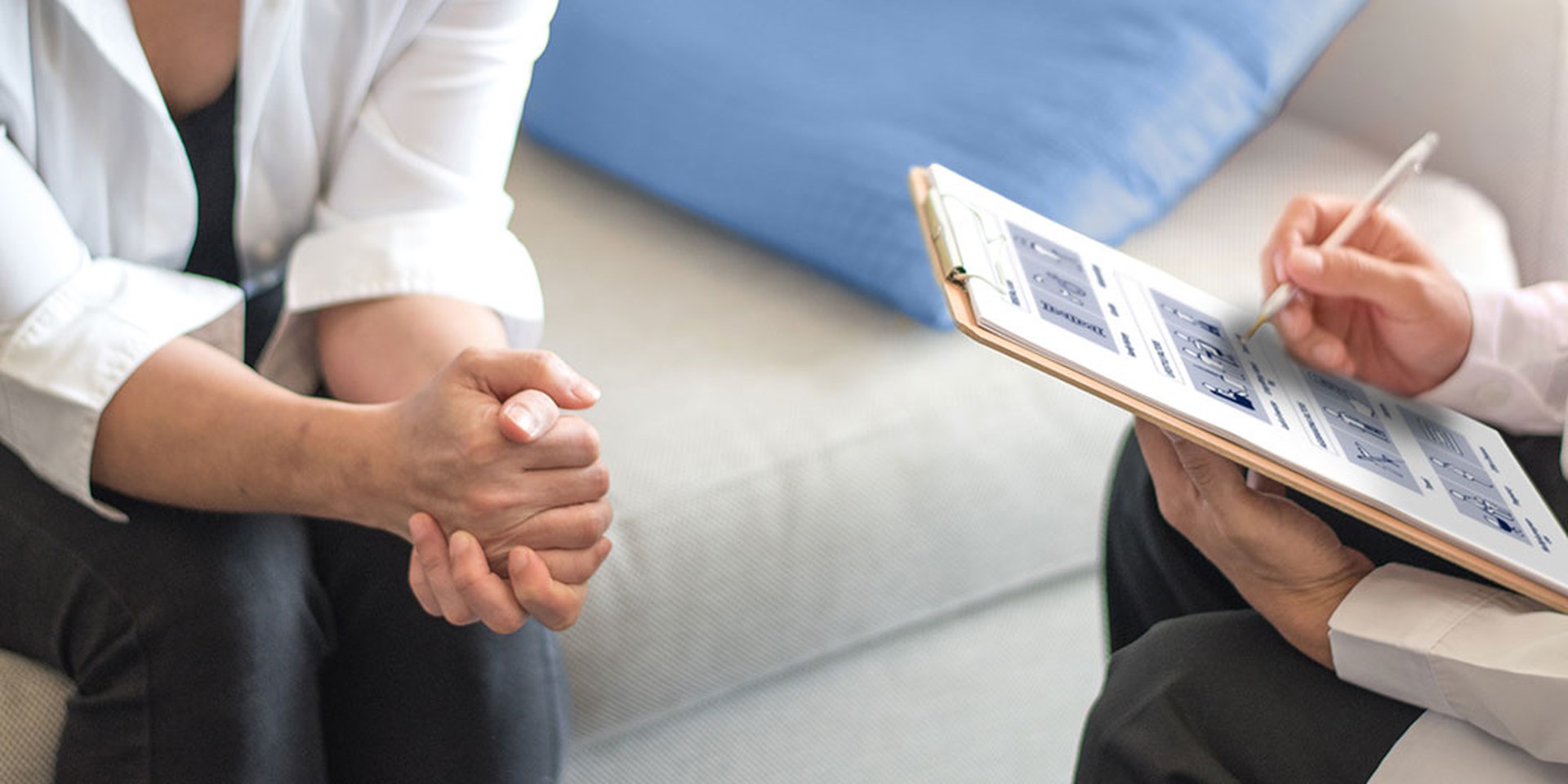These factors influence leg health
Many factors can unfavorably influence leg health. These can include lifestyle factors, such as reduced activity, obesity, and/or smoking. Other factors such as advanced age, gender, hormonal changes, and a family history of venous disorders are also influential.

Lifestyle factors
Lifestyle-related obesity
Obesity is an important risk factor for the development of vascular disorders, including all types of lower limb venous diseases.
Sedentary lifestyle
Reduced physical activity can lead to frequently occurring leg symptoms like heaviness, pain, and swelling, and to more severe venous disease like deep vein thrombosis (DVT), which is when a blood clot forms in one or more of the deep veins in your body, usually in the legs.
When your legs are inactive, the leg muscle pump system is not working and therefore not supporting the upward venous blood return. This can result in pooling, or even clotting of blood in the veins of your legs, if a venous insufficiency i.e. defective venous valves, exists.
Smoking
Smoking is not only damaging to the lungs, but also to the legs. It is an important risk factor for peripheral arterial disease and the development of lower limb venous insufficiency.
Compression wear can help
Besides avoiding these negative lifestyle factors, compression wear might help to support your leg health by revitalizing your legs, relieving early symptoms like pain, heaviness and swelling, and by increasing the venous return.
Obesity and lower limb venous disease - The epidemic of phlebesity.
The effects of obesity on venous thromboembolism: A review*
Chronic venous disease progression and modification of predisposing factors.
Recent Knowledge of Smoking and Peripheral Arterial Disease in Lower Extremities
The biology behind the atherothrombotic effects of cigarette smoke.
Lower Limb Venous Insufficiency and Tobacco Smoking: A Case-Control Study
Chronic venous disease progression and modification of predisposing factors.
Lack of exercise is a major cause of chronic diseases
Compression stockings for preventing deep vein thrombosis in airline passengers.
Risk factors
Advanced age and family history
The risk of developing venous disorders increases with age as the cells in the vascular system are aging as well. Age-related changes of venous walls and valves can lead to a decline in valve function. If one of your family members suffers from venous disease, you have a higher risk of becoming affected at some point in your life due to genetic predisposition. This is because specific genetic variations that can be inherited enhance the likelihood of a person to develop chronic venous insufficiency or varicose veins.
Gender and hormonal change
Women are twice as likely to develop varicose veins than men. The sex hormone progesterone, an endogenous steroid, is the main active ingredient in contraceptive medication and naturally involved in the menstrual cycle and pregnancy. It leads to a loss of venous wall tonicity (progesterone causes the vein walls to dilate).
Furthermore, the risk of developing deep vein thrombosis (DVT) increases by taking contraceptive medication and during pregnancy.
Pregnancy enhances the risk of thrombosis four-fold to five-fold. One reason for this increased risk is hypercoagulability, which has most probably evolved to protect women against the bleeding challenges associated with childbirth and miscarriage. The risk continues after birth until the woman’s hormonal levels return to their pre-pregnancy state. The risk is at its highest in the days and weeks after birth.
Research studies show a strong association between a history of pregnancy and varicose veins. Consequently, many mothers-to-be experience common symptoms such as heavy, tired, aching legs, and swollen feet and ankles. 30 percent of women pregnant for the first time and 55 percent of women who have had two or more full-term pregnancies develop varicose veins, according to a report by «Swiss Medical Weekly».
In postmenopausal women with chronic venous insufficiency, venous pain seems to be a common symptom. This is due to hormonal fluctuations and due to the fact that pain perception is generally increased during menopause.
Compression wear helps
Compression wear is a preventive measure to help improve overall circulation. If you have a feeling of pain, heaviness, or swelling in the affected leg, compression wear can help you to relieve the symptoms.
Compression wear helps against morning sickness
Did you know that compression hosiery also helps against morning sickness? A recent study has shown that compression stockings alleviate nausea and vomiting symptoms during early pregnancy. Order our Mendoza one-pager by e-mail for more information!
Risk Factors for Chronic Venous Disease: the San Diego Population Study
Prevalence and risk factors of chronic venous insufficiency.
Wirkweise und Indikationen zur Kompression in der Praxis
The Effect of Aging on Venous Valves
A genetic study of chronic venous insufficiency.
Evidence for a genetic role in varicose veins and chronic venous insufficiency.
Risk factors for the development of venous insufficiency of the lower limbs during pregnancy--part 1
Postpartum venous thromboembolism: incidence and risk factors
Evaluation of pain associated with chronic venous insufficiency in Spanish postmenopausal women.
Aggravating factors
Surgery, trauma, and traveling increase risk of thrombosis
Research shows that surgery, trauma, and long-distance traveling are associated with increased risk of venous thrombosis. Poor blood circulation during surgery or long-distance traveling or even a trauma can lead to the formation of a blood clot (thrombosis). The blood clot in some cases can migrate to the lungs, resulting in a pulmonary embolism. If left untreated, this can be fatal.
Constrained movement restricts the blood circulation in the legs, which in consequence can lead to heavy legs, leg pain, swollen feet, and swollen ankles.
Compression wear helps after surgery
Wearing compression stockings has been recommended to reduce the risk of DVT following surgery. For more information, watch our video on compression and hospitalization.
The discomfort and risk of DVT applies to all types of long-distance travel by car, train, or bus, and it can happen to anyone regardless of age, weight, or lifestyle. A simple and comfortable way to help relieve the symptoms of heavy legs, leg pain, swollen feet and ankles during travel is to wear graduated compression stockings.